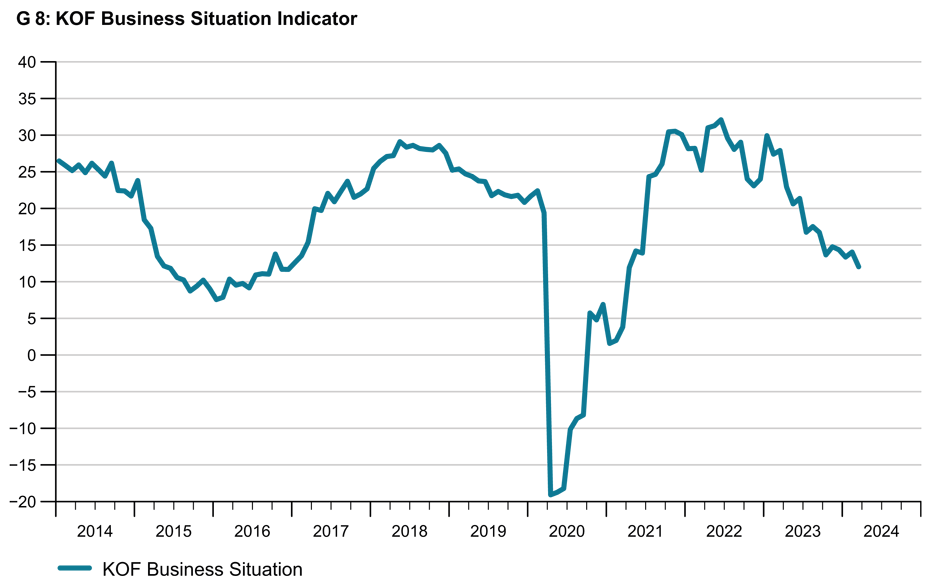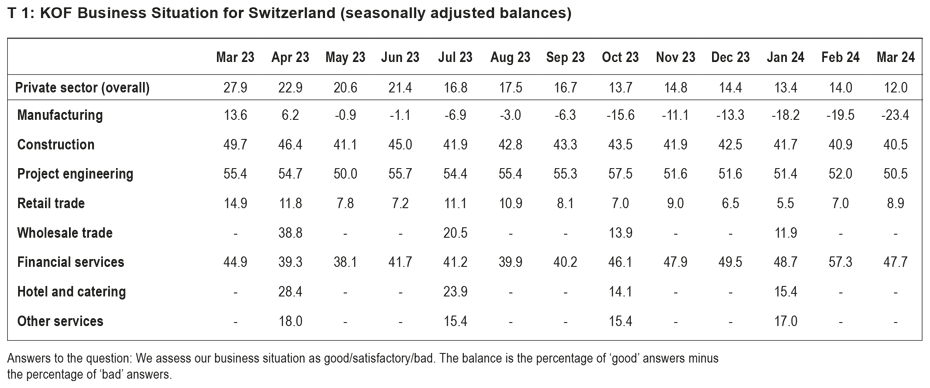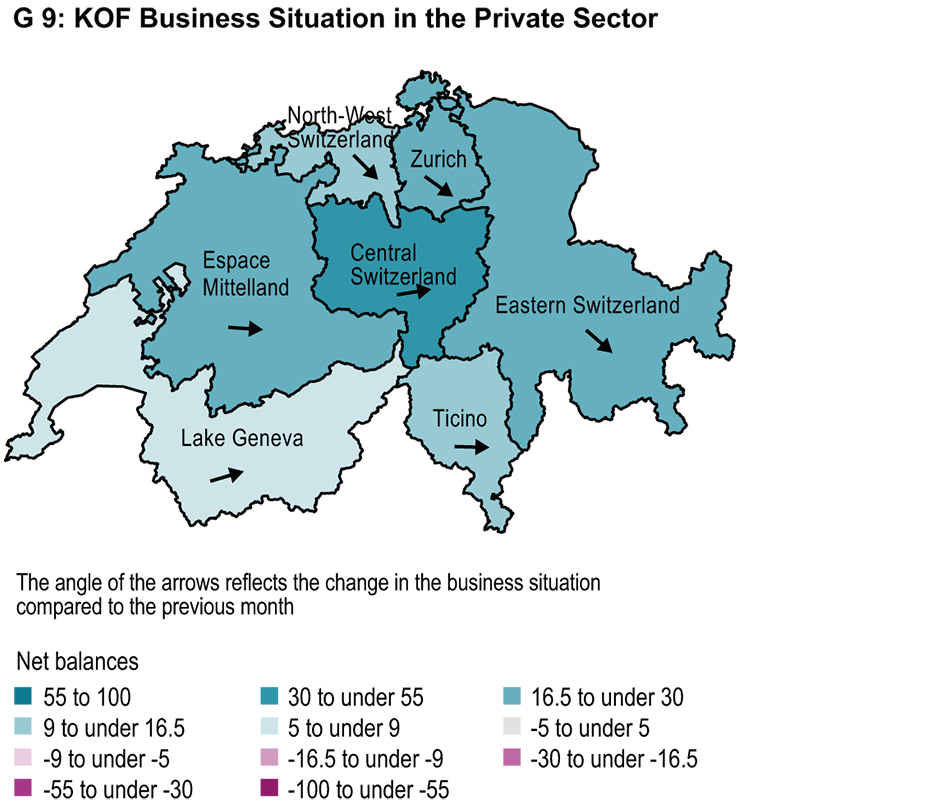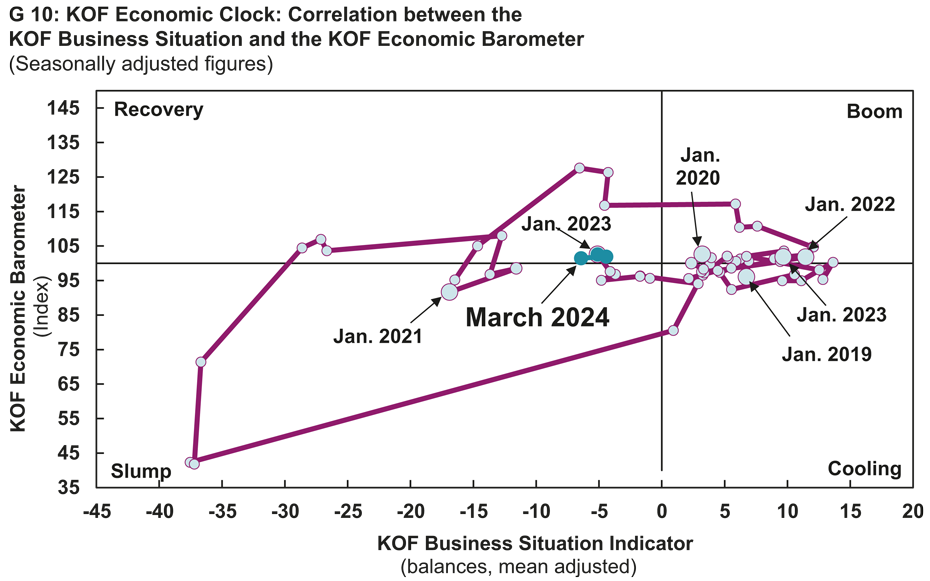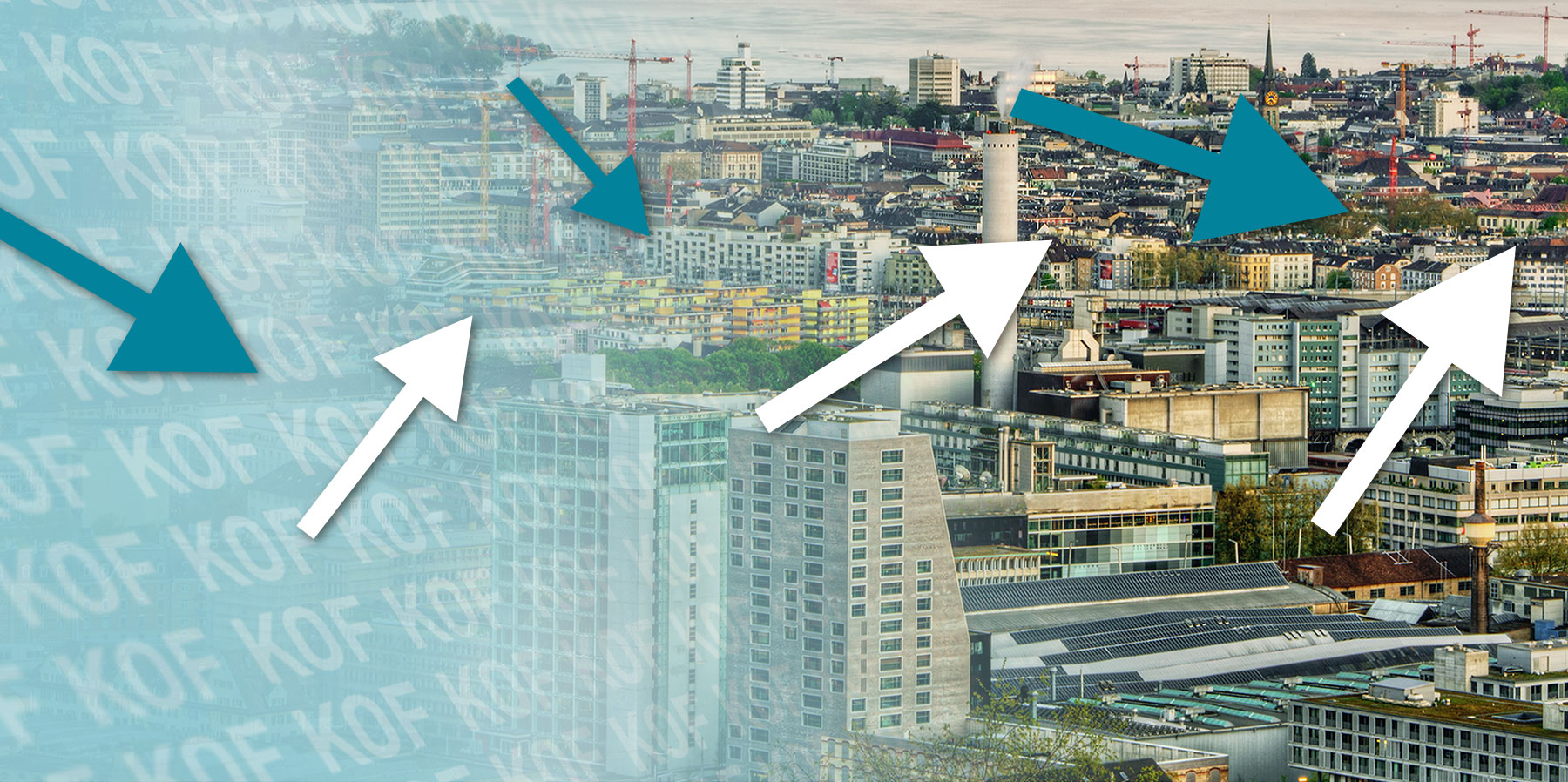
KOF Business Situation Indicator on the decline again
The KOF Business Situation Indicator for the Swiss private sector fell again in March after initially not continuing its downward trend in the previous month (see chart G 8). Firms’ expectations about their business activities over the next six months are slightly more confident than they were in the previous month. Conditions in the Swiss economy remain challenging.
The Business Situation Indicator for the manufacturing sector continued to fall. Dissatisfaction with existing order books increased again among firms, although incoming orders fell less frequently than in the previous month. The Business Situation Indicator for the project engineering sector declined slightly in April, while in the construction industry it continued to fall marginally. In the financial and insurance services sector it fell significantly after having risen sharply in the previous month. In April the Business Situation Indicator increased in the retail trade only (see table T 1).
The Business Situation Indicator fell in three major FSO regions: Northwestern Switzerland, Eastern Switzerland and the Zurich region. In two of them it remains virtually unchanged compared with the previous month, namely in Espace Mittelland and Ticino. By contrast, the situation is improving in Central Switzerland and the Lake Geneva region (see chart G 9).
The KOF Business Situation Indicator illustrates companies' current business situation. The KOF Economic Barometer, on the other hand, is an indicator of the economic outlook. The Economic Barometer shows that economic activity was sluggish in 2023. There are only tentative signs of improvement in the first few months of 2024 (see chart G 10).
Explanation:
Chart G 8 shows the KOF Business Situation Indicator across all sectors included in the survey. The business situation of sectors that are only surveyed quarterly is kept constant in the interim months.
Chart G 9 shows the business situation in the main regions defined by the Swiss Federal Statistical Office. The regions are coloured differently to reflect their business situation. The arrows within the regions indicate the change in the situation compared with the previous month. An upward-pointing arrow, for example, indicates that the situation has improved compared with the previous month.
The Business Situation Indicator in the KOF Business Cycle Clock (chart G 10) is plotted against the KOF Economic Barometer. The indicator reflects the current business situation, while the barometer is a leading indicator of changes in activity. The clock can be divided into quadrants. During the recovery phase the business situation is below average but growth prospects are above average. At the peak of the economic cycle the situation and prospects are both above average. During the slowdown phase the situation is above average and prospects are below average. At the bottom of the economic cycle the situation and outlook are both below average. Ideally the chart runs through the quadrants in a clockwise direction.
The KOF Business Situation Indicator is based on more than 4,500 reports from firms in Switzerland. Companies in the manufacturing, retail, construction, project engineering, and financial services and insurance industries are surveyed monthly. Businesses in the hospitality, wholesale and other services sectors are surveyed during the first month of each quarter. These firms are asked, among other things, to assess their current business situation. They can rate their situation as either ‘good’, ‘satisfactory’ or ‘poor’. The net balance of their current business situation is the difference between the percentages of ‘good’ and ‘poor’ responses.
Contact
KOF Konjunkturforschungsstelle
Leonhardstrasse 21
8092
Zürich
Switzerland

